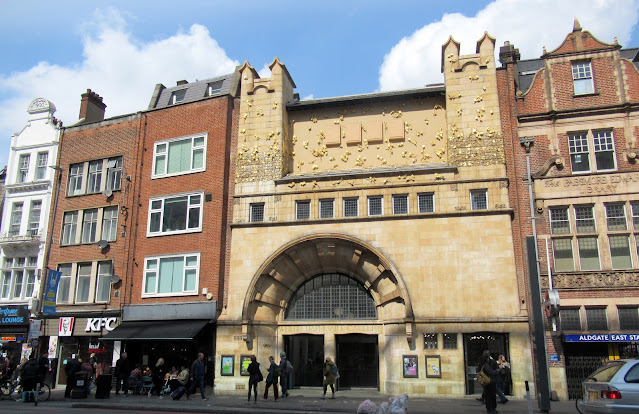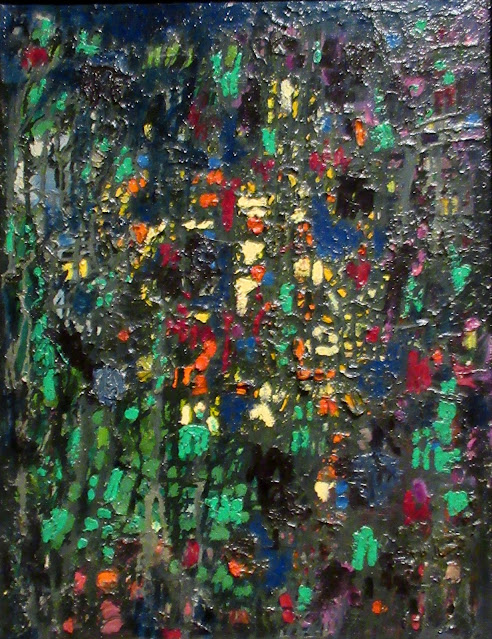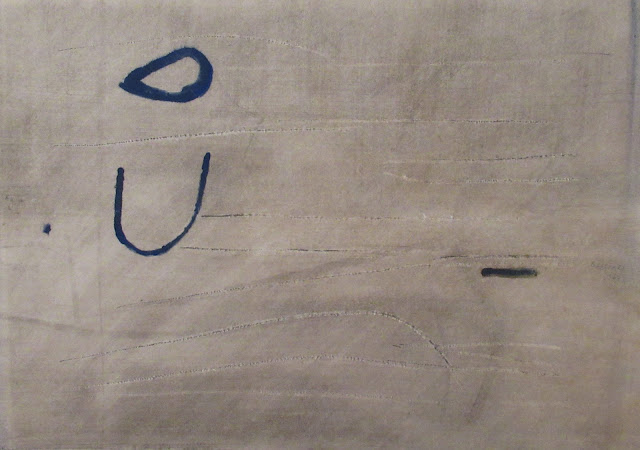Action, Gesture and Paint: Women Artists and Global Abstraction, 1940-70 at the Whitechapel Gallery.
An exhibition celebrating the women artists of mid-20th century gestural abstraction, showing how they shaped modern painting. The story of abstract art took a radical turn in the 1940s. Fusing bodily, gestural and emotive expression with colour, mark-making and the materiality of paint, this new movement was termed (in the USA) as Abstract Expressionism. It is often thought to have been centred in New York, where it was defined mainly by the work of white male artists. However, this new style of painting was a global phenomenon, shaped as much by local cultural and political context as by international exchange and dialogue.
The contributions of women have long been marginalised in modern art. The paintings presented here demonstrate how women across the world were fundamental in evolving the story of abstraction, incorporating experiences of turbulent social change into their work and promoting freedom of expression. Their art was made in a period of great historical shifts: the aftermath of WWII, global industrialisation, the rise of civil rights and post-colonial movements and a 'cold war' - marked by the threat of nuclear extinction - between capitalist democracies and communist states. Against this backdrop, the USA promoted abstract art as a form of western propaganda, to counter the influence of communism.
The exhibiton explores how artists made the canvas an arena for experimentation and personal expression through form and colour. It focuses on five themes: paint as material and process; symbolic languages drawn from myth and ritual; abstraction as an expression of the self; painting as movement and dance; and the canvas as environment.
The exhibition was divided into five section and I have replicated this with my posts. There are five posts which mirror the sections of the exhibition, each with the same general introduction.
Section 1: Paint as Material and Process.
The works grouped here show artists exploring the materiality of paint in its own right. The canvas becomes a laboratory where pigement is diluted and layered or allowed to take on a life of its own through splashes dribbles and stains. Paint may be laid on thickly and shaped like a sculptural form. It is made analogous with the world through the incorporation of found materials such as much rag, sawdust, resin, paint tubes and even cigarette ash. The surface of the painting becomes mutable, shaped by violent acts or tender, intimate gestures revealing the processes of their making alongside chance, accident and the passage of time.
Helen Frankenthaler, USA, April Mood, 1974, (acrylic on canvas)
A major figure of American abstraction, Frankenthaler is known for her invention of the soak-stain technique in New York in the 1950s. Often working on the floor, she applied thinned-down paint onto unprimed canvas so diluted it looked like watercolour. She desribed this body of work as 'drawing with colour' and made increasingly monumental paintings leading to the Colour Field movement which she pioneered.
Sandra Blow, UK, Painting (57), 1957, (oil on canvas)
One of the pioneers of the British abstract movement, Blow's paintings are characteristically large scale, colourful abstract collages incorporating discarded studio materials such as sawdust, sackcloth and plaster and loose tea. She painted large geometric shapes which emphasised surface textures creating a tactile quality. Blow is credited with introducing a new, expessive informality to abstract painting in Britain through her improvisatory approach to materials, partly shaped by her influence of Italian Arte Informale.
Sandra Blow, Composition 1, 1960, (oil on board)
Sandra Blow, Creation, (oil on board)
Audrey Flack, USA, Abstract Force: Homage to Franz Kline, 1951-52, (oil on canvas)
Marta Minujin, Untitled, 1961-62, (sand, pyroxylin shellac, chalk and carpenter's glue on hardboard)
Bice Lazzari, Italy, Untitled, 1964, (pencil and watercolour on paper)
Lazzari had little exposure to international currents of abstraction and it was through her research into design and decoration that she developed her approach to abstraction. By the late 1950s she became associated with Italian Informalism and devoted herself to painting.
Bice, Lazzari, Surface H1, 1959, (tempera, glue, sand and graffitti on canvas)
Wook-kyung Choi, Korea, Untitled, (acrylic on canvas)
A Korean artist who moved to the US in the early 1960s, Wook-kyung Choi had a short yet prolific career before her tragic death at the age of 45. Influenced by Korean Art Informel as well as Abstract Expressionism and Pop Art in the US, her paintings combine the use of bold colour, an interplay of organic and linear shapes and line and mass through rapid and seemingly chaotic brushwork, alongside passages of more controlled application.
Wook-kyung Choic, Untitled, 1960s, (acrylic on canvas)
Fanny Sanin, Colombia, (oil on canvas)
Yuki Katsura, Japan, Untitled, 1960, (acrylic on canvas)
Initially trained in both Nihonga (Japanese style painting) and Western painting, Katsura visited Paris, Central Africa and New York in the late 1950s, where she produced a series of unique two-dimensional works, which involved painting over pieces of wrinkled washi paper that had been collaged onto the canvas. After three years in New York, she returned to Japan in 1961 and continued to experiment with unconventional modes of expression including finely detailed paintings, collages and caricatures.
Yuki Katsura, Work, 1959, (oil on canvas)
Yuki Katsura, Work, 1958-62, (oil and paper on canvas)
Dusti Bonge, USA, The Beckon, 1956, (oil on Masonite)
Bonge is considered Mississippi's first Abstract Expressionist painter. Her early work depicted scenes of Biloxi, Mississippi as well as a variety of self-portraits and still lifes that became more and more abstract over the 950s as she moved fully into Abstract Expressionism. She continually experimented with different expressive techniques and explored various gestural approaches alternating palettes and compositional layouts.
Yolanda Mohalyi, Romania/Brazil, Travel, 1967, (oil on canvas)
A key figure in post-war Brazilian art. In the 1950s after a trip to Europe, she moved away from figuration towards an expressive informalist style, adding textures of sand, sawdust and collage to her works.
Helen Frankenthaler, After Rubens, 1961, (oil and charcoal on unsized, unprimed canvas)
Ruth Armer, USA, Untitled, 1955-60, (oil on canvas)
A pioneer of non-objective painting in California, Armer's atmospheric, process-oriented work included a series of synaesthetic early abstractions that associated the emotional and aural characteristics elicited from sound into colour and line.
Helen Frankenthaler, Vessel, 1961, (oil on unsized, unprimed canvas)
Gillian Ayres, UK, Break-off, 1961, (oil on canvas)
Ayres studied at Camberwell School of Art and exhibited with the Young Contemporaries in 1949, aged just 19. One of the leading exponents of the radical developments in abstract painting dominating British art in the 1950s and 60s, Ayres' heavily worked canvases reflected how she claimed to see the world in ebullient shapes and colours.
Sylvia Snowden, USA, Untitled, 1966, (acrylic and oil pastel on Masonite)
An African American abstract painter, Snowden has developed a singular body of work which is characterised by a fisceral and sculptural application of paint and densely worked underlayers. Often working in series, Snowden's expressive paintings convey an emotional force and tactile quality as she explores the struggles and triumphs of communities around her.
Gillian Ayres, Sun Up, 1960, (oil on canvas)
Gillian Ayres, Distilation, 1957, (oil and house paint on board)























































